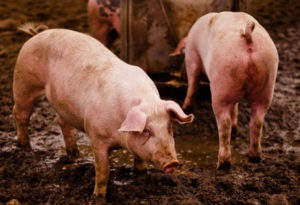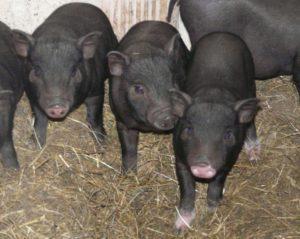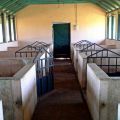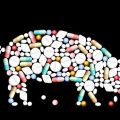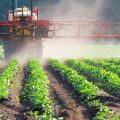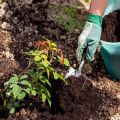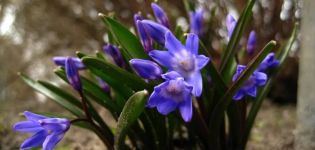What herbs can and can not be given to piglets, a list of useful and dangerous plants
In the diet of piglets, there must be plant food. Vegetable supplements (carrots, beets) are popular. In the summer period, herbal complementary foods are necessarily introduced. To figure out what kind of grass can and should be given to piglets, it is advisable to familiarize yourself with the beneficial qualities of plants. It is important to take into account that there are crops that are poisonous to animals of all ages.
What grass can be given to piglets
The importance of plant foods in piglet diets should not be underestimated. Herbal supplements improve digestion, contain a variety of nutrients and vitamins. Fresh herbal food can make up 30-40% of a piglet's diet.
Part of the cut grass is given to the piglets fresh. The other part is finely chopped, steamed in hot water (2 hours before feeding). The herbal mass is mixed with mashed potatoes, concentrates, and the mixture becomes like a thick soup. Such food can be given to piglets from the age of three weeks.
In piglets aged 4 to 9 months, the active formation of the skeletal system takes place, muscle tissue grows. It is important to provide animals with adequate nutrition, high in protein. In the summer, piglets are often kept in pastures. The green diet is supplemented with kitchen waste, vitamins, concentrates.
Legumes
Herbal crops contain a large amount of protein, vitamins, minerals (especially phosphorus and calcium). The optimal time for cutting grasses is before the flowering phase. It is during this period that herbs contain the greatest amount of protein. In plants mown later, the indicators of nutrients and trace elements deteriorate. Clover and alfalfa are most often added to food for piglets.

Clover contains 750 kg / ha of digestible protein. The green mass is saturated with flavonoids, carinoids. Clover contains protein, tannin, and other beneficial substances. Mow the grass before the flowering phase, as the amount of protein in the flowering crop decreases. Alfalfa contains 1050 kg / ha of digestible protein, essential amino acids, and minerals. An unlimited amount of young grass is added to the diet of piglets, which has grown to a height of 10-15 cm. The advantage of alfalfa is its rapid growth after mowing.
Cereals
From cereals, winter rye or wheat is added to the food for piglets. It should be borne in mind that the nutritional value of forage from cereals is lower than forage from legumes. As a green feeding, juicy sprouts of winter crops are used, which are mowed 2-3 weeks after the snow melts. As wheat and rye grow, the nutritional value of plants decreases.
Advice! Piglets eat grasses of cereals worse than legumes, so their share in the diet may be less.
Cruciferous
Of this family of cultures, turnip and rape are popular.
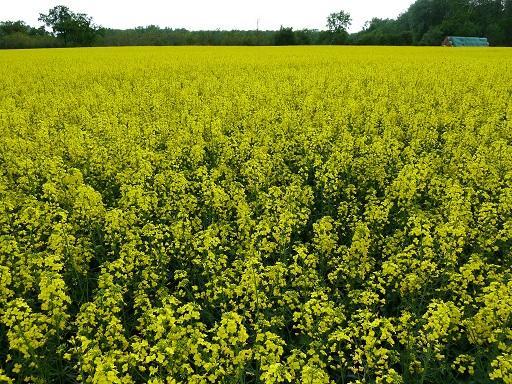
Due to its rich composition, green rapeseed is especially good feed for piglets:
- the culture contains protein, ascorbic acid, carotene;
- a kilogram of feed contains 2.6 g of calcium, 0.8 g of phosphorus, 0.3 g of magnesium, 1 g of sulfur, 4.5 g of potassium.
Juicy green rapeseed is well digested by the digestive system of animals. The winter crop grows intensively after mowing, which is an advantage when providing piglets with complementary foods (5-6 months of a full-fledged green supplement in conditions of good irrigation of the fields).
Poisonous herbs for pigs
Piglets for normal growth and full development are desirable to graze on lawns with fresh grass. In addition to useful plants, meadows can grow crops that should not be consumed by animals. Most often, several plants are found.
Milestone poisonous
A perennial culture that grows along the banks of ponds, in swampy shady places. The peculiar smell is reminiscent of the aroma of parsley. All parts of the plant, especially the root, are poisonous. Symptoms of poisoning: severe convulsions, breathing and heart problems. Death occurs as a result of respiratory paralysis.
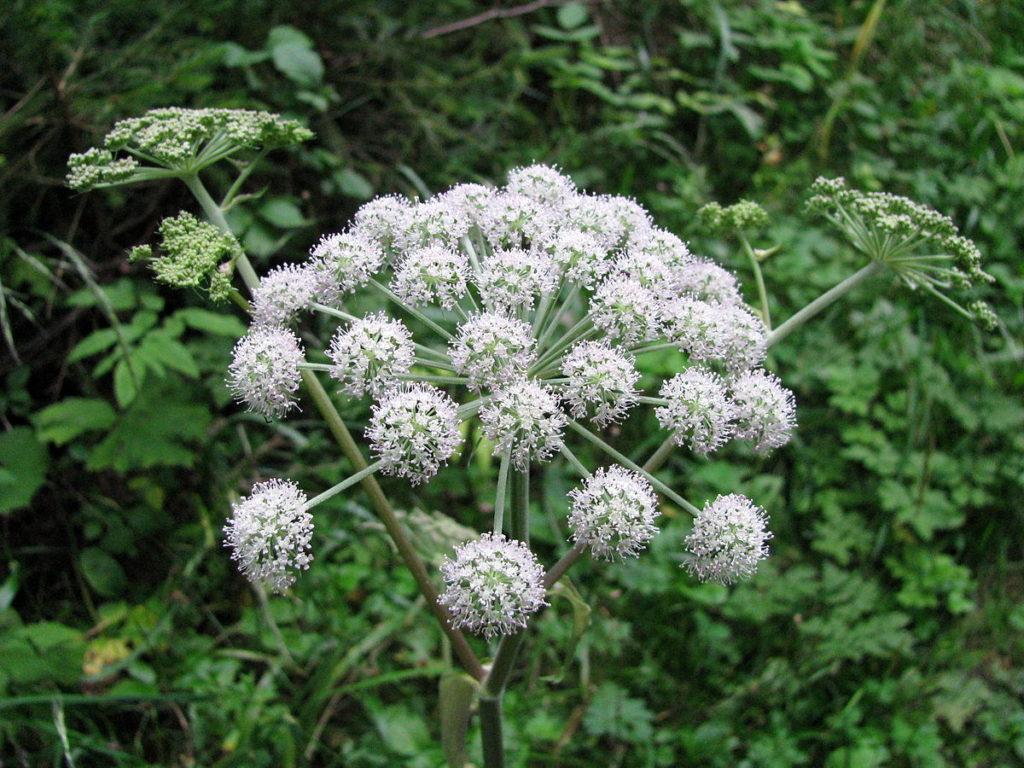
Dope
Common places of growth are outskirts, garbage areas. Animals are poisoned by eating leaves and stems and become shy, restless. Cardiac activity is disturbed, breathing becomes tense, shallow. With severe poisoning, death occurs in 4-6 hours.
Hellebore
The tall plant is found in forest, mountain, floodplain meadows. The main symptoms of severe poisoning:
- nausea, stomach contents are excreted through the nose;
- salivation;
- convulsive contractions of the muscles of the neck, abdomen.
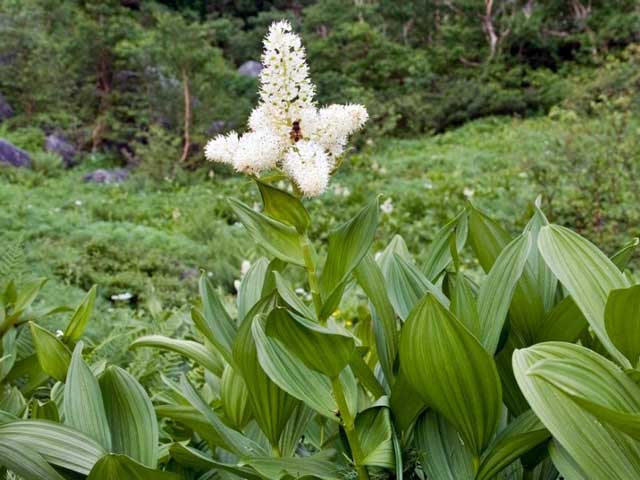
Animal behavior becomes restless. Convulsions appear, the gait becomes tense. The cause of death is pulmonary edema, which causes respiratory arrest.
Buttercup
A perennial plant that grows in wet meadows, forest glades, on the banks of ponds. Eating greens leads to impaired consciousness of the animal, convulsions, diarrhea, complete inability to stand. Serious damage to the digestive tract and kidneys causes death within 30 to 60 minutes of symptoms.
Nightshade
A perennial crop, often growing among bushes, in wet meadows, on the banks of ponds. In piglets, nightshade poisoning appears quickly. Symptoms: unsteady gait, dilated pupils, impaired cardiac activity, diarrhea. The consequences of poisoning are degenerative changes in the liver, heart muscle.

Mustard
A weed culture is found in fields, vegetable gardens, wastelands. Poisoned animals become depressed, muscle cramps appear, appetite decreases, and diarrhea begins. Death occurs very quickly as a result of suffocation from pulmonary edema.
Green feed is considered an important supplement in the piglet diet. Greens are introduced into food gradually, starting in portions of 100-150 grams. A popular and easy way to diversify your diet is to graze animals on green pastures. When mowing grasses, make sure that there are no harmful plants in the cultivated area.
